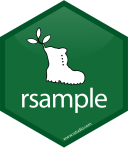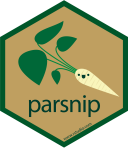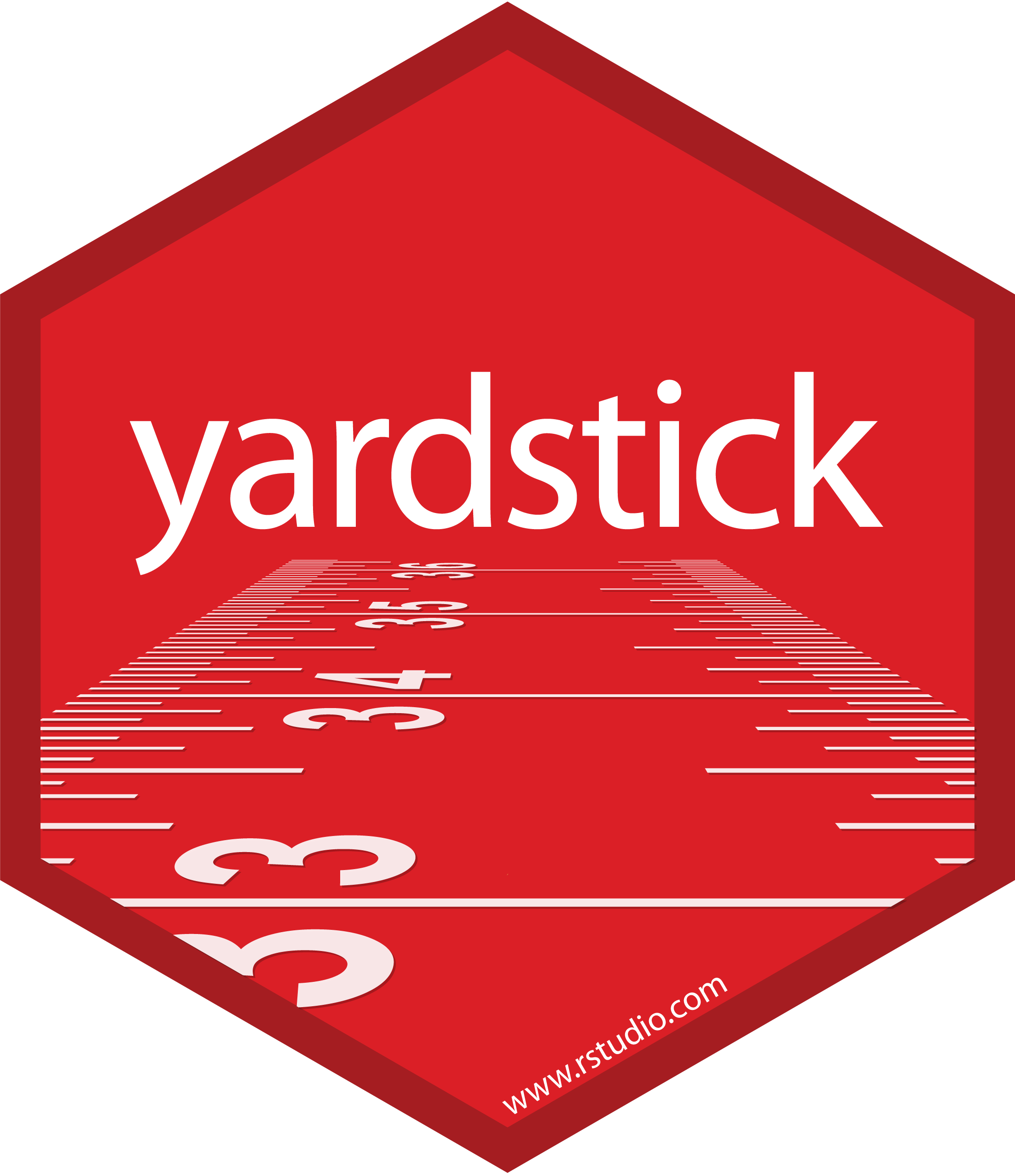library(tidymodels)
library(ongoal)
tidymodels_prefer()
glimpse(season_2015)
#> Rows: 8,915
#> Columns: 13
#> $ on_goal <fct> no, no, yes, no, yes, no, no, yes, no, no, no, yes, no…
#> $ period <int> 1, 1, 1, 1, 1, 1, 1, 1, 1, 1, 1, 1, 1, 1, 1, 1, 1, 1, …
#> $ game_seconds <dbl> 13, 36, 47, 92, 99, 125, 179, 220, 252, 309, 413, 427,…
#> $ strength <fct> even, even, even, even, even, even, even, even, even, …
#> $ home_skaters <dbl> 5, 5, 5, 5, 5, 5, 5, 5, 5, 5, 5, 5, 5, 5, 5, 5, 5, 5, …
#> $ away_skaters <dbl> 5, 5, 5, 5, 5, 5, 5, 5, 5, 5, 5, 5, 5, 5, 5, 5, 5, 5, …
#> $ goaltender <fct> marc_andre_fleury, antti_niemi, antti_niemi, antti_nie…
#> $ goal_difference <dbl> 0, 0, 0, 0, 1, 1, 1, 1, -1, -1, 1, 1, 1, 1, -1, -1, 1,…
#> $ shooter <fct> evgeni_malkin, valeri_nichushkin, phil_kessel, beau_be…
#> $ shooter_type <fct> center, right_wing, center, right_wing, center, defens…
#> $ coord_x <dbl> -66, -49, 64, 65, 80, 42, -55, 62, -67, -58, 76, 56, -…
#> $ coord_y <dbl> -11, -21, -31, -21, 13, 31, -19, 15, -9, -16, -8, 25, …
#> $ extra_attacker <dbl> 0, 0, 0, 0, 0, 0, 0, 0, 0, 0, 0, 0, 0, 0, 0, 0, 0, 0, …5 - Feature engineering
Machine learning with tidymodels
Working with our predictors
We might want to modify our predictors columns for a few reasons:
- The model requires them in a different format (e.g. dummy variables for
lm()). - The model needs certain data qualities (e.g. same units for K-NN).
- The outcome is better predicted when one or more columns are transformed in some way (a.k.a “feature engineering”).
The first two reasons are fairly predictable (next page).
The last one depends on your modeling problem.
What is feature engineering?
Think of a feature as some representation of a predictor that will be used in a model.
Example representations:
- Interactions
- Polynomial expansions/splines
- PCA feature extraction
There are a lot of examples in Feature Engineering and Selection.
Example: Dates
How can we represent date columns for our model?
When a date column is used in its native format, it is usually converted by an R model to an integer.
It can be re-engineered as:
- Days since a reference date
- Day of the week
- Month
- Year
- Indicators for holidays
General definitions ![]()
Data preprocessing steps allow your model to fit.
Feature engineering steps help the model do the least work to predict the outcome as well as possible.
The recipes package can handle both!
In a little bit, we’ll see successful (and unsuccessful) feature engineering methods for our example data.
The NHL data 🏒
From Pittsburgh Penguins games, 8,915 shots
Data from the 2015-2016 season
Let’s predict whether a shot is on-goal (a goal or blocked by goaltender) or not.
Case study
Data splitting strategy
Why a validation set?
Recall that resampling gives us performance measures without using the test set.
It’s important to get good resampling statistics (e.g. \(R^2\)).
- That usually means having enough data to estimate performance.
When you have “a lot” of data, a validation set can be an efficient way to do this.
Splitting the NHL data ![]()
Validation split ![]()
Since there are a lot of observations, we’ll use a validation set:
Remember that a validation split is a type of resample.
Your turn

Let’s explore the training set data.
Use the function plot_nhl_shots() for nice spatial plots of the data.
Prepare your data for modeling ![]()
- The recipes package is an extensible framework for pipeable sequences of feature engineering steps that provide preprocessing tools to be applied to data.
- Statistical parameters for the steps can be estimated from an initial data set and then applied to other data sets.
- The resulting processed output can be used as inputs for statistical or machine learning models.
A first recipe ![]()
- The
recipe()function assigns columns to roles of “outcome” or “predictor” using the formula
A first recipe ![]()
summary(nhl_rec)
#> # A tibble: 13 × 4
#> variable type role source
#> <chr> <list> <chr> <chr>
#> 1 period <chr [2]> predictor original
#> 2 game_seconds <chr [2]> predictor original
#> 3 strength <chr [3]> predictor original
#> 4 home_skaters <chr [2]> predictor original
#> 5 away_skaters <chr [2]> predictor original
#> 6 goaltender <chr [3]> predictor original
#> 7 goal_difference <chr [2]> predictor original
#> 8 shooter <chr [3]> predictor original
#> 9 shooter_type <chr [3]> predictor original
#> 10 coord_x <chr [2]> predictor original
#> 11 coord_y <chr [2]> predictor original
#> 12 extra_attacker <chr [2]> predictor original
#> 13 on_goal <chr [3]> outcome originalCreate indicator variables ![]()
For any factor or character predictors, make binary indicators.
There are many recipe steps that can convert categorical predictors to numeric columns.
Filter out constant columns ![]()
In case there is a factor level that was never observed in the training data (resulting in a column of all 0s), we can delete any zero-variance predictors that have a single unique value.
Normalization ![]()
This centers and scales the numeric predictors.
The recipe will use the training set to estimate the means and standard deviations of the data.
- All data the recipe is applied to will be normalized using those statistics (there is no re-estimation).
Reduce correlation ![]()
To deal with highly correlated predictors, find the minimum set of predictor columns that make the pairwise correlations less than the threshold.
Other possible steps ![]()
PCA feature extraction…
Other possible steps ![]()
![]()
A fancy machine learning supervised dimension reduction technique…
Other possible steps ![]()
Nonlinear transforms like natural splines, and so on!
Your turn

Create a recipe() for the on-goal data to :
- create one-hot indicator variables
- remove zero-variance variables
03:00
Minimal recipe ![]()
Using a workflow ![]()
![]()
![]()
![]()
set.seed(9)
nhl_glm_wflow <-
workflow() %>%
add_recipe(nhl_indicators) %>%
add_model(logistic_reg())
ctrl <- control_resamples(save_pred = TRUE)
nhl_glm_res <-
nhl_glm_wflow %>%
fit_resamples(nhl_val, control = ctrl)
collect_metrics(nhl_glm_res)
#> # A tibble: 2 × 6
#> .metric .estimator mean n std_err .config
#> <chr> <chr> <dbl> <int> <dbl> <chr>
#> 1 accuracy binary 0.756 1 NA Preprocessor1_Model1
#> 2 roc_auc binary 0.753 1 NA Preprocessor1_Model1Your turn

Use fit_resamples() to fit your workflow with a recipe.
Collect the predictions from the results.
05:00
Holdout predictions ![]()
![]()
![]()
![]()
# Since we used `save_pred = TRUE`
glm_val_pred <- collect_predictions(nhl_glm_res)
glm_val_pred %>% slice(1:7)
#> # A tibble: 7 × 7
#> id .pred_yes .pred_no .row .pred_class on_goal .config
#> <chr> <dbl> <dbl> <int> <fct> <fct> <chr>
#> 1 validation 0.00844 0.992 2 no no Preprocessor1_Mod…
#> 2 validation 0.0864 0.914 10 no no Preprocessor1_Mod…
#> 3 validation 0.799 0.201 22 yes yes Preprocessor1_Mod…
#> 4 validation 0.615 0.385 24 yes yes Preprocessor1_Mod…
#> 5 validation 0.787 0.213 31 yes yes Preprocessor1_Mod…
#> 6 validation 0.872 0.128 39 yes yes Preprocessor1_Mod…
#> 7 validation 0.00000000903 1.00 40 no no Preprocessor1_Mod…Two class data
Let’s say we can define one class as the “event”, like a shot being on goal.
The sensitivity is the true positive rate (accuracy on actual events).
The specificity is the true negative rate (accuracy on actual non-events, or 1 - false positive rate).
Two class data
These definitions assume that we know the threshold for converting “soft” probability predictions into “hard” class predictions.
Is a 50% threshold good?
What happens if we say that we need to be 80% sure to declare an event?
- sensitivity ⬇️, specificity ⬆️
What happens for a 20% threshold?
- sensitivity ⬆️, specificity ⬇️
Varying the threshold
ROC curves
To make an ROC (receiver operator characteristic) curve, we:
calculate the sensitivity and specificity for all possible thresholds
plot false positive rate (x-axis) versus true positive rate (y-axis)
We can use the area under the ROC curve as a classification metric:
- ROC AUC = 1 💯
- ROC AUC = 1/2 😢
ROC curves ![]()
# Assumes _first_ factor level is event; there are options to change that
roc_curve_points <- glm_val_pred %>% roc_curve(truth = on_goal, .pred_yes)
roc_curve_points %>% slice(1, 50, 100)
#> # A tibble: 3 × 3
#> .threshold specificity sensitivity
#> <dbl> <dbl> <dbl>
#> 1 -Inf 0 1
#> 2 0.00143 0.0412 0.968
#> 3 0.00988 0.127 0.968
glm_val_pred %>% roc_auc(truth = on_goal, .pred_yes)
#> # A tibble: 1 × 3
#> .metric .estimator .estimate
#> <chr> <chr> <dbl>
#> 1 roc_auc binary 0.753ROC curve plot ![]()
Your turn

Compute and plot an ROC curve for your current model.
What data are being used for this ROC curve plot?
05:00
What do we do with the player data? 🏒
There are 598 unique player values in our training set. How can we include this information in our model?
We could:
make the full set of indicator variables 😳
lump players who rarely shoot into an “other” group
use feature hashing to create a smaller set of indicator variables
use effect encoding to replace the
shootercolumn with the estimated effect of that predictor
Let’s look at othering then effect encodings.
Per-player statistics
Collapsing factor levels
There is a recipe step that will redefine factor levels based on the their frequency in the training set:
Using this code, 402 players (out of 598) were collapsed into “other” based on the training set.
We could try to optimize the threshold for collapsing (see the next set of slides on model tuning).
Does othering help?
nhl_other_wflow <-
nhl_glm_wflow %>%
update_recipe(nhl_other_rec)
nhl_other_res <-
nhl_other_wflow %>%
fit_resamples(nhl_val, control = ctrl)
collect_metrics(nhl_other_res)
#> # A tibble: 2 × 6
#> .metric .estimator mean n std_err .config
#> <chr> <chr> <dbl> <int> <dbl> <chr>
#> 1 accuracy binary 0.778 1 NA Preprocessor1_Model1
#> 2 roc_auc binary 0.804 1 NA Preprocessor1_Model1A little better ROC AUC and much faster to complete.
Now let’s look at a more sophisticated tool called effect encodings.
What is an effect encoding?
We replace the qualitative’s predictor data with their effect on the outcome.
Data before:
The shooter column is replaced with the log-odds of being on goal.
Per-player statistics again
Good statistical methods for estimating these rates use partial pooling.
Pooling borrows strength across players and shrinks extreme values (e.g. zero or one) towards the mean for players with very few shots.
The embed package has recipe steps for effect encodings.
Partial pooling
Player effects ![]()
![]()
It is very important to appropriately validate the effect encoding step to make sure that we are not overfitting.
Recipes are estimated ![]()
Preprocessing steps in a recipe use the training set to compute quantities.
What kind of quantities are computed for preprocessing?
- Levels of a factor
- Whether a column has zero variance
- Normalization
- Feature extraction
- Effect encodings
When a recipe is part of a workflow, this estimation occurs when fit() is called.
Effect encoding results ![]()
![]()
![]()
![]()
nhl_effect_wflow <-
nhl_glm_wflow %>%
update_recipe(nhl_effect_rec)
nhl_effect_res <-
nhl_effect_wflow %>%
fit_resamples(nhl_val, control = ctrl)
collect_metrics(nhl_effect_res)
#> # A tibble: 2 × 6
#> .metric .estimator mean n std_err .config
#> <chr> <chr> <dbl> <int> <dbl> <chr>
#> 1 accuracy binary 0.791 1 NA Preprocessor1_Model1
#> 2 roc_auc binary 0.805 1 NA Preprocessor1_Model1Better and it can handle new players (if they occur).
Where is the shot coming from? 🏒🧐
Angle
Shot from the defensive zone
Behind goal line
Fit different recipes ![]()
![]()
![]()
![]()
A workflow set can cross models and/or preprocessors and then resample them en masse.
no_coord_rec <-
nhl_indicators %>%
step_rm(starts_with("coord"))
set.seed(9)
nhl_glm_set_res <-
workflow_set(
list(`1_no_coord` = no_coord_rec, `2_other` = nhl_other_rec,
`3_effects` = nhl_effect_rec, `4_angle` = nhl_angle_rec,
`5_zone` = nhl_zone_rec, `6_bgl` = nhl_behind_rec),
list(logistic = logistic_reg())
) %>%
workflow_map(fn = "fit_resamples", resamples = nhl_val, verbose = TRUE, control = ctrl)Your turn

Create a workflow set with 2 or 3 recipes.
(Consider using recipes we’ve already created.)
Use workflow_map() to resample the workflow set.
08:00
Compare recipes
Compare recipes
Debugging a recipe
- Typically, you will want to use a workflow to estimate and apply a recipe.
- If you have an error and need to debug your recipe, the original recipe object (e.g.
encoded_players) can be estimated manually with a function calledprep(). It is analogous tofit(). See TMwR section 16.4
- Another function (
bake()) is analogous topredict(), and gives you the processed data back.
- The
tidy()function can be used to get specific results from the recipe.
Example
nhl_angle_fit <- prep(nhl_angle_rec)
tidy(nhl_angle_fit, number = 1) %>% slice(1:4)
#> # A tibble: 4 × 4
#> level value terms id
#> <chr> <dbl> <chr> <chr>
#> 1 aaron_ekblad 0.250 shooter lencode_mixed_qBdjK
#> 2 adam_clendening 0.202 shooter lencode_mixed_qBdjK
#> 3 adam_cracknell 0.288 shooter lencode_mixed_qBdjK
#> 4 adam_henrique 0.221 shooter lencode_mixed_qBdjK
bake(nhl_angle_fit, nhl_train %>% slice(1:3), starts_with("coord"), angle, shooter)
#> # A tibble: 3 × 4
#> coord_x coord_y angle shooter
#> <dbl> <dbl> <dbl> <dbl>
#> 1 67 -37 59.3 0.220
#> 2 55 -7 11.6 0.302
#> 3 42 -18 21.0 0.261More on recipes
- Once
fit()is called on a workflow, changing the model does not re-fit the recipe.
- A list of all known steps is at https://www.tidymodels.org/find/recipes/.
- Some steps can be skipped when using
predict().
- The order of the steps matters.






